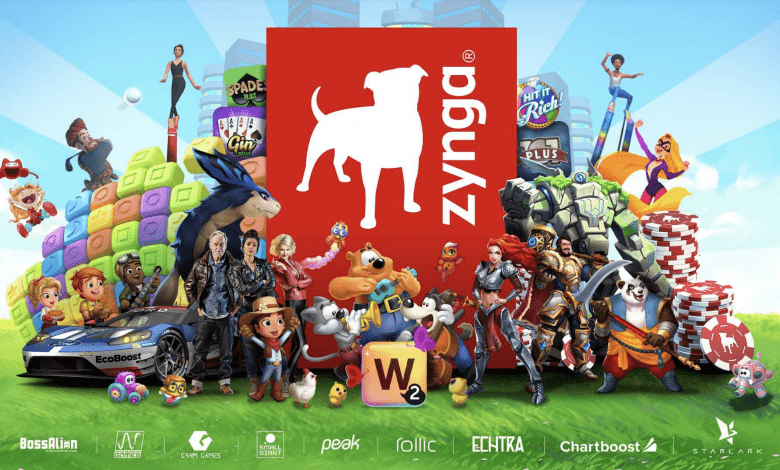How To Incorporate Web3 Gaming Into Your Web 2.0 Strategy
Despite growing interest from Web 2.0 companies, the widespread adoption of web3 and its high level of complexity have many people completely off guard. There were a lot of issues on how to authentically incorporate the technology into Internet 2.0 business models that bring value to the customer and do not compete with present revenue streams. There is also a lot of healthy skepticism: can web3 enable significant new user experiences, or is it just a hype bubble that complicates what Internet 2.0 already made possible?
However, blockchain technology has undeniable inherent value, and the gaming industry is positioned to become the center of adoption.
What Is Web3 Gaming?
Web3 gaming is a decentralized gaming process in which any central authority is removed from a gaming ecosystem or platform’s operations, specifically the ownership of gaming assets and decision-making in all game-related areas.
Blockchain technology is being used to create Web3 games, which give players a voice in how and when the game should change. By providing asset trading, tradeable game tokens, and opportunities for players to earn in cryptocurrencies while playing, Web3 gaming also provides the groundwork for play-to-earn for users and transforms the pay-to-play aspect.
For the gaming industry, Web3 gaming offers fair virtual marketplaces where gamers can access and fully control in-game digital assets. These resources are unique and are kept in the form of gaming NFTs.
By connecting in-game assets and players across platforms, web3 gaming offers extensive interoperability among various gaming ecosystems. The sort of blockchain platform chosen for creating a gaming ecosystem will affect interoperability. For instance, the interoperability capability in cross-chain communication bridges is offered by Polkadot or Solana.
What is web3 gaming and why should I care?, by @afriverse_guild https://t.co/QeXeh6kfd6
— Afriverse Guild (@afriverse_guild) August 22, 2022
Although the economic models for web3 gaming are still unknown, it seems more and more likely that gaming and gamified experiences will drive the subsequent exponential growth in blockchain use. The overall goal of web3 gaming is to give players more control, to compensate them fairly for the value they add, and to lower the barrier so that more players than just the top 0.1% can support themselves through gaming.
Internet 2.0 companies must explore how their brand can coexist in a traditional gaming environment to prepare for the migration to web3 content. If it is successful, web3 gaming will fundamentally alter thousands of people’s career choices and the entertainment industry for almost everyone.
Despite how exciting this opportunity may seem, many Internet 2.0 manufacturers hoping to benefit from web3 games may find it to be a terrifying thought. So, where should we begin?
Also, read – What is GameFi 2.0 And Its Relation With Metaverse
Use baby steps.
Non-gaming companies have realized how effective gaming can be in raising awareness among young audiences. For this kind of activity within their game, as their most recent Balenciaga X Fortnite collaboration, Fortnite has become well renowned.
But the key differentiator in blockchain gaming is that business activity is already incorporated into the game’s core. The participant can transition from model consciousness to conversion with substantially less deviation than during routine games, thanks to comparable activation.
Stay informed with daily updates from Blockchain Magazine on Google News. Click here to follow us and mark as favorite: [Blockchain Magazine on Google News].
Get Blockchain Insights In Inbox
Stay ahead of the curve with expert analysis and market updates.
latest from tech
Disclaimer: Any post shared by a third-party agency are sponsored and Blockchain Magazine has no views on any such posts. The views and opinions expressed in this post are those of the clients and do not necessarily reflect the official policy or position of Blockchain Magazine. The information provided in this post is for informational purposes only and should not be considered as financial, investment, or professional advice. Blockchain Magazine does not endorse or promote any specific products, services, or companies mentioned in this posts. Readers are encouraged to conduct their own research and consult with a qualified professional before making any financial decisions. The featured image used is just a creative depiction of the title and it does not intend to hurt sentiments of any person or institution. If it hurts anyone sentiments, please do not hesitate to reach out to Blockchain Magazine.

 Bitcoin
Bitcoin  Ethereum
Ethereum  XRP
XRP  Tether
Tether  Solana
Solana  USDC
USDC  Dogecoin
Dogecoin  Cardano
Cardano  Lido Staked Ether
Lido Staked Ether  TRON
TRON  Chainlink
Chainlink  Wrapped Bitcoin
Wrapped Bitcoin  Sui
Sui  Wrapped stETH
Wrapped stETH  Avalanche
Avalanche  Stellar
Stellar  Hedera
Hedera  Toncoin
Toncoin  Shiba Inu
Shiba Inu  LEO Token
LEO Token  Hyperliquid
Hyperliquid  Bitget Token
Bitget Token  Litecoin
Litecoin  WETH
WETH  USDS
USDS  Polkadot
Polkadot  Bitcoin Cash
Bitcoin Cash  Ethena USDe
Ethena USDe  MANTRA
MANTRA  Wrapped eETH
Wrapped eETH  Uniswap
Uniswap  Ondo
Ondo  Pepe
Pepe  Monero
Monero  Aave
Aave  WhiteBIT Coin
WhiteBIT Coin  NEAR Protocol
NEAR Protocol  Mantle
Mantle  Official Trump
Official Trump  Aptos
Aptos  Dai
Dai  Internet Computer
Internet Computer  Ethereum Classic
Ethereum Classic  Bittensor
Bittensor  Cronos
Cronos  OKB
OKB  POL (ex-MATIC)
POL (ex-MATIC)  Gate
Gate 



